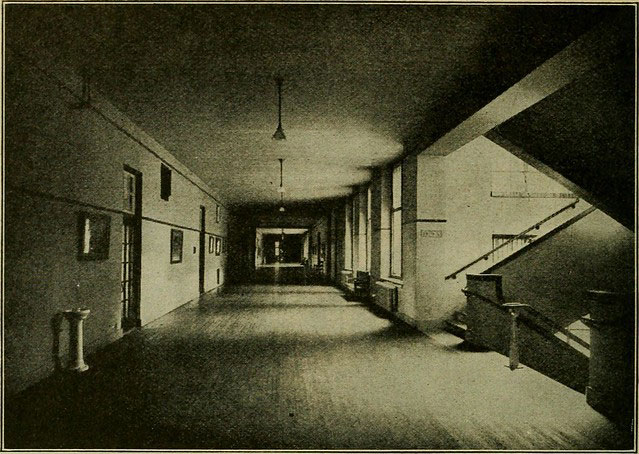Building Category
An effective building safety management system is a set of rules that specify the minimum standards for constructed objects like buildings and non-building structures. All buildings shall be classified according to their use or by considering the character of their occupancy.

For these guidelines, the occupancy classification groups shall be as follows:
Occupancy |
Building Category |
A |
Residential |
B |
Educational |
C |
Institutional |
D |
Health Care |
E |
Assembly |
F |
Business and Mercantile |
G |
Industrial |
H |
Storage |
I |
Hazardous |
J |
Miscellaneous |
Occupancy A
Residential Buildings

This occupancy sort shall embody any building or portion therefrom providing sleeping and construction to connected or unrelated teams of individuals, with or without lavatory or dining facilities.
Occupancy B
Educational Facilities
This occupancy sort shall embody any building or portion therefrom within which education, coaching, and care area unit provided to youngsters or adults.
Occupancy C
Institution for Care

Buildings classified below this occupancy shall be for purposes of institutional care of the occupants, like detention for correctional, medical, or nursing care of persons suffering from illness due to mental conditions, or an accommodation of kids or minors etc.
Occupancy D
Health Care Facilities
Buildings below this occupancy cluster shall embrace those used for functions of providing medical aid, diagnostic facilities, and medical treatment , during which sleeping accommodation could or might not be provided.
Occupancy E
Assembly

Buildings under this occupancy group shall include any building or portion thereof in which groups of people congregate or assemble for recreation, amusement, social, religious, political, cultural, travel, and similar purposes.
Occupancy F
Business and Mercantile
Business: These shall include any building or portion thereof which is used for any business transaction other than mercantile.
Mercantile: This occupancy sort shall include any building or portion therefrom or cluster of a building that is employed for the show and sale of merchandise.
Occupancy G
Institutional Buildings
Buildings below this occupancy shall be divided on the thought of the hazard potential of the contents and add the processes of the business. The hazard shall usually mean the relative danger of the beginning of fire and the rapidity of its spread, the danger of smoke and gases generated that create a possible threat to the safety of the occupants of the building.
Occupancy H
Storage Buildings

Buildings below this occupancy group shall embody any building or portion thence used primarily for storage or sheltering of goods, wares, merchandise, vehicles, or animals.
Occupancy I
Hazardous Buildings
Any building or portion thereof used as storage, industrial, research, and other facilities dealing with hazardous material more than exempted quantity or any micro-biological facilities.
Occupancy J
Miscellaneous
Buildings below this occupancy cluster shall embrace special buildings not lined in alternative occupancy teams.
Precautionary Requirements
Classification of Construction Type: For the purpose of this code, every room or control area or space of a building or a building itself hereafter altered or erected shall be classified in one specific type of construction as grouped as follow:
GROUP 1– Non-Combustible, subdivided as follows:
Type- A 4hour Protected
Type- B 3hour Protected
Type- C 2hour Protected
Type- D 1 hour Protected
Type- E Unprotected
GROUP 2– Combustible, subdivided as follows:
Type- A Heavy timber
Type- B Protected wood joist
Type- C Unprotected wood joist
Type- D Protected wood frame
Type- E Unprotected wood frame
The types of construction are based on the fire resistance of construction elements.
Effective Building Safety Management System

Fire Lifts
Fire lifts, where installed shall be fully automated from the ground level with all though fire-rated and protected wiring and switches and shall have a minimum capacity of 8 persons. Fire lifts shall be operated and maintained by the inmates of the building except during fire.
During the fire, the Fireman shall take over operating such lifts. Fire lifts shall be equipped with approved two-way voice communication with the fire command station or control room or security room on the exit termination level of a building.
The number and location of fire lifts in a building shall be decided based on total occupant load, floor area, and compartment. A Lift shaft or bank shall be dedicated to a Fire lift. The speed of the lift shall be such that it can reach the top floor from ground level (non-stop) within 1 minute.
Smoke detectors shall be installed at a distance of 3m from every entry door of Fire Lifts and links with corresponding lift control panels to prevent lift doors to open in case of fire at any level.

Means of Egress
A means of egress is a continuous and unobstructed way of exit travel from any point in a building to a public way. A means of egress consists of 3 parts: the exit access, the exit, and the exit discharge.
A public way is a space that is permanently deeded and dedicated to public use, most often a street or lane.
Means of Egress Requirements
- For any storey with only two exits, the maximum occupant load should not exceed 500 people.
- For any storey with only three exits, the maximum occupant load should not exceed 1000 people.
- For any storey with only four exits, the maximum occupant load is more than 1000 people minimum.
- For rooms with more than 49 occupants, doors must swing within the direction of egress (i.e. the doors must swing out of the room).
- For areas with more than 49 occupants, doors ought to be equipped with panic hardware (crash bars).
Stair Treads Width
General: Minimum widths of exit stairways 1.5m (59 inches)
Existing Building: Only for existing building stairs shall have a minimum width of 0.90m (35 inches)
Newly Building: All newly building constructed stairs shall have a minimum width of 1.25m (50 inches)
Assembly Building: For all assembly, occupancies shall have a minimum width of 2.0m (79 inches)
* Existing stairs shall meet the requirements of this subsection. Stairs shall be of noncombustible construction.
Fire Protection Systems in Buildings
Automatic Sprinkler System: Automatic sprinkler system shall be installed throughout all portions of new and existing high-rise buildings with an occupied floor greater than 23m (75 ft) above the finished grade.
Hydrant System
The hydrant (Standpipe) system shall be installed throughout all new and existing buildings and structures where the highest occupied floor is more than 10m (33 ft) above.
Fire Alarm and Detection System
Automatic fire alarm and detection systems shall be installed throughout all new and existing buildings. An automatic fire alarm system that activates the alarm and occupant notification devices by manual or automatic initiating devices.
Portable Fire Extinguishers
Portable fire extinguishers shall be installed throughout all new and existing buildings. Extinguishers shall be placed so most travel distance to the closest unit shall not exceed 30m (100 ft).
Fire Extinguisher identification signs shall be displayed close to a fireplace extinguisher to simply determine the situation (e.g. if the fire extinguisher is on an oversized pole, the sign would usually be at the highest of the pole therefore it will be seen from a distance).
It additionally must be placed close to the trail of exit travel and it shall be easily accessible.
